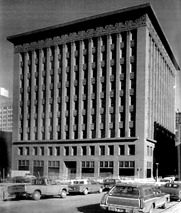The organizations interested in the co-creation of knowledge are making workspaces more flexible to enable temporary project-specific adaptations, casual encounters, and unplanned team work. However, the flexibilization of workspaces is pursued by organizations interested in the optimization of work processes too, with a different motivation: they want to shrink or grow the employee base at the minimal costs and the maximum productivity.

The history of the office provides clear examples on how workspaces are becoming more flexible in general. The Wainwright Building was one of first generation commercial office buildings, designed by Louis Sullivan in 1890. It is based on enclosed cells with two or three desks each, providing quite some privacy and auditory isolation.
Under the influence of Taylorist approaches for work optimization, Frank Lloyd Wright designed the Larkin Administration Building in 1904. This was one of the first office buildings based on the open plan, borrowed from factories. The open plan allows for the managers to oversee a large number of specialized workers, with the drawback of diminishing their privacy and concentration.
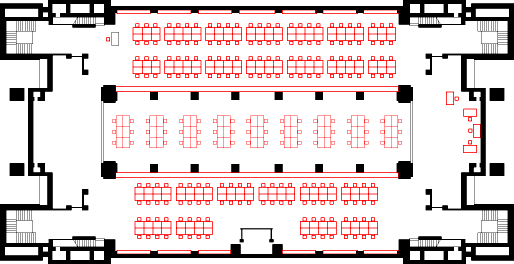
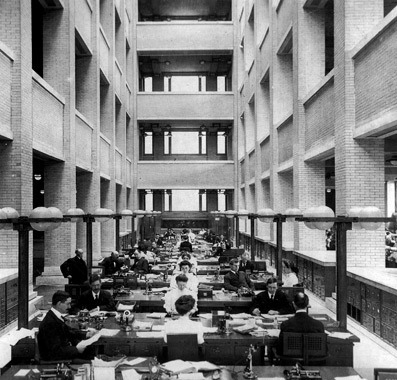
In reaction to the rationalization at office work introduced by open plans, the Quickborner team developed the alternative office landscape in the 1960s, in which desks are scattered all over the plan without following a grid pattern. The goal is to create some degree of differentiation and privacy for workers, breaking the visibility lines used by management for overseeing. In fact, the underlying message of this layout is the affirmation of equality and diversity between the workers.
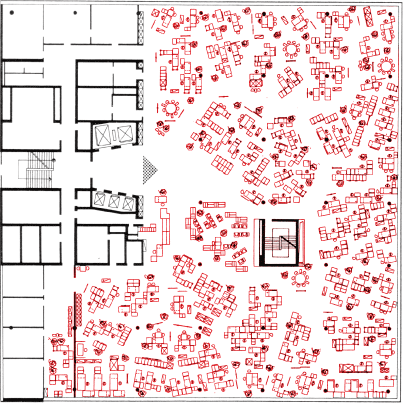
With the intent to increase worker’s privacy and reduce noise, Robert Propst devised the Action Office modular furniture in 1964. The varied possibilities of arrangements was expected to support an active office worker, which would move here and there while doing his job. This concept did not pick up steam, nevertheless. The copycats of the action furniture have thrown away the worker’s flexibility in favor of reduced costs and increased privacy. There was born the office cubicle.

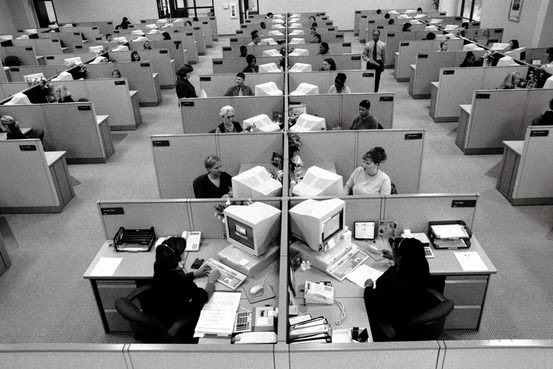
Thanks to worker’s complaints about alienation, cubicles are no longer popular. The open plan is still common, but the trend now is to draw curved shapes circulation areas across the plan. The spaces are fit for teams working in temporary projects, including not only collaborative technologies but also integrated spaces for recreation and relaxation. Googleplex by Clive Wilkinson and DEGW serves as a showcase for the casual office.

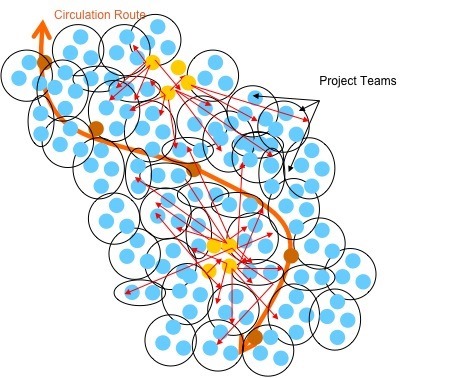
In the last years, organizations are exploring even more flexible workspaces, where workers and furniture do not have fixed spots. Everything is moving at the office, in the attempt to follow the outbursts of team creativity. Since workers are able to work from home or from other remote locations, the reason for going to the office is to make use of such teamwork facilities.
I have observed in my PhD study how the principles of flexibility were gradually applied in designing workspaces for a medical imaging center. The animation below has four steps, each corresponding to one developmental stage of the floor plan. The first plan has segregated spaces for separate activities and the last has integrated spaces for overlapping activities. With the creation of the second corridor at the bottom of the layout, the scanning rooms could be connected to the dressing rooms of both sides. Previously, each scanning room had their own dedicated dressing room.
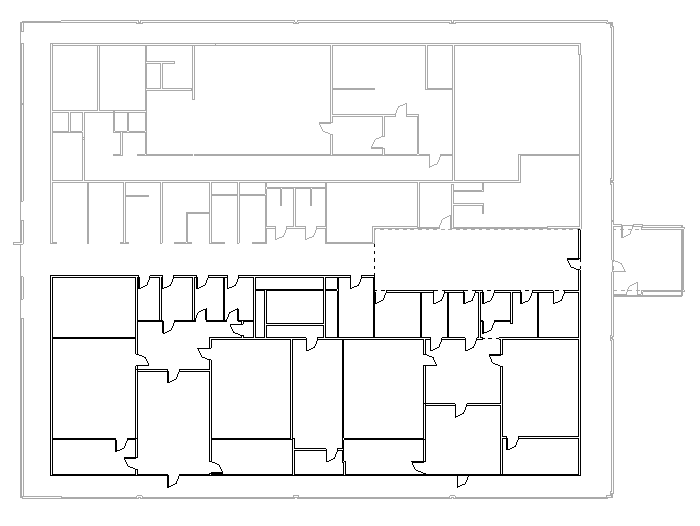
These layout transformations were achieved through the participation of users in the design. Although the users recognized that the initial plan was streamlined to their work processes, they demanded connections between the spaces to help team coordination and provide opportunities for casual encounters. This was in line with the center’s goal to promote the co-creation of knowledge.
However, implementing those changes meant creating more generic spaces, multiple paths from one to another room, and eventual points of distraction. These changes undermined the design strategy to make a perfect fit between the workflow and the spatial layout. In the next post, I’ll talk about the spatialization of the workflow and how the users and designers overcame the contradiction with the flexibilization of workspaces.
